Listed
Below Are the Top New Technology Trends, for 2023.
Technology is
the application of scientific knowledge to the practical aims of human life or,
as it is sometimes phrased, to the change and manipulation of the human
environment.
Technology
today is evolving at a rapid pace, enabling faster change and progress, causing
an acceleration of the rate of change. However, it is not only technology
trends and emerging technologies that are evolving, a lot more has changed this
year due to the outbreak of COVID-19 making IT professionals realize that their
role will not stay the same in the contactless world tomorrow. And an IT
professional in 2023-24 will constantly be learning, unlearning, and relearning
(out of necessity if not desire).
Artificial
intelligence will become more prevalent in 2023 with natural language
processing and machine learning advancement. Artificial intelligence can better
understand us and perform more complex tasks using this technology. It is
estimated that 5G will revolutionize the way we live and work in the future.
What does
this mean for you? It means staying current with emerging technologies and the d
latest technology trends. And it means keeping your eyes on the future to know
which skills you’ll need to know to secure a safe job tomorrow and even learn
how to get there. All bows to the worldwide pandemic, most of the global IT
population is sitting back, working from home. And if you wish to make the most
of your time at home, here are the top 18 emerging technology trends you should
watch for and make an attempt at in 2023, and possibly secure one of the jobs
that will be created by these new technology trends.
Here
are some of the Latest New Technology Top New Technology Trends for 2023:
- Artificial Intelligence (AI) and
Machine Learning (ML)
- Robotic Process Automation (RPA)
- Edge Computing.
- Quantum Computing.
- Virtual Reality (VR) and
Augmented Reality (AR)
- Blockchain.
- Internet of Things (IoT)
- 5G.
- Cybersecurity
- Full Stack Development
- Computing Power
- Datafication
- Digital Trust
- Internet of Behaviours
- Predictive analytics
- DevOps
- 3D Printing
- AI-as-a-Service
- Genomics
Artificial
Intelligence (AI) and Machine Learning (ML)
Artificial
Intelligence (AI) is an umbrella term for computer software that mimics human
cognition to perform complex tasks and learn from them. Machine learning (ML)
is a subfield of AI that uses algorithms trained on data to produce adaptable
models that can perform a variety of complex tasks.
Robotic
Process Automation (RPA)
Robotic
process automation is a form of business process automation technology based on
metaphorical software robots or artificial intelligence /digital workers. It is
sometimes referred to as software robotics.
Robotic
process automation (RPA) occurs when basic tasks are automated through software
or hardware systems that function across a variety of applications, just as
human workers do. This can greatly reduce labor costs and increase efficiency
by speeding things up and greatly minimizing human error.
The software
or robot can be taught a workflow with multiple steps and applications, such as
taking received forms, sending a receipt message, checking the form for
completeness, filing the form in a folder, and updating a spreadsheet with the
name of the form, the date filed, and so on. RPA software is designed to reduce
the burden for employees of completing repetitive, simple tasks.
Edge
Computing
Edge
computing is an emerging computing paradigm that refers to a range of networks
and devices at or near the user. Edge is about processing data closer to where
it's being generated, enabling processing at greater speeds and volumes,
leading to greater action-led results in real-time.
Edge
computing is a distributed computing paradigm that brings computation and data
storage closer to the sources of data. This is expected to improve response
times and save bandwidth.
Quantum
Computing
Notably,
quantum computers are believed to be able to solve certain problems quickly
that no classical computer could solve in any feasible amount of time—a feat
known as "quantum supremacy." The study of the computational
complexity of problems concerning quantum computers is known as quantum
complexity theory.
A quantum
computer is a computer that exploits quantum mechanical phenomena. At small
scales, physical matter exhibits properties of both particles and waves, and
quantum computing leverages this behavior using specialized hardware.
Virtual
Reality (VR) and Augmented Reality (AR)
AR uses a
real-world setting while VR is completely virtual. AR users can control their
presence in the real world; VR users are controlled by the system. VR requires
a headset device, but AR can be accessed with a smartphone. AR enhances both
the virtual and real world while VR only enhances a fictional reality.
·
Difference between AR and VR with example
·
Virtual reality and augmented reality article
·
Difference between augmented reality and virtual
reality pdf
·
Difference between augmented reality and virtual
reality in the tabular form
·
Augmented reality vs virtual reality PPT
·
AR vs VR vs MR
·
AR VR MR
·
AR VR applications
Blockchain
What Is
Blockchain Technology? Blockchain is a method of recording information that makes it impossible
or difficult for the system to be changed, hacked, or manipulated. A blockchain
is a distributed ledger that duplicates and distributes transactions across the
network of computers participating in the blockchain.
Internet
of Things (IoT)
The Internet
of things describes physical objects with sensors, processing ability, software,
and other technologies that connect and exchange data with other devices and
systems over the Internet or other communications networks.
5G New
5G
wireless new technology is meant to deliver higher multi-GBPS peak data speeds, ultra-low
latency, more reliability, massive network capacity, increased availability,
and a more uniform user experience to more users. Higher performance and
improved efficiency empower new user experiences and connect new industries.
In
telecommunications, 5G is the fifth-generation new technology standard for
broadband cellular networks, which cellular phone companies began deploying
worldwide in 2019, and is the planned successor to the 4G networks which
provide connectivity to most current cellphones.
Cybersecurity
Cybersecurity
is the protection of internet-connected systems such as hardware, software, and
data from cyber threats. The practice is used by individuals and enterprises to
protect against unauthorized access to data centers and other computerized
systems.
Full
Stack Development
Full stack
development refers to end-to-end application software development, including
the front end and back end. The front end consists of the user interface, and
the back end takes care of the business logic and application workflows.
Consider a
retail website. Users can browse or purchase specific items, delete or add
items to a cart, change their profile, and do many other things. All these
actions require a front-end user interface (UI), as well as some business
logic, written in the back end.
- The website UI can be built
using various, front-end technologies like HTML,
CSS, and Javascript.
- The back end is written in programming
languages like Java or Python. Further, a good web
application would need scalability, event handling, and routing, which are
usually handled by libraries and frameworks like
SpringBoot or Django.
- The back end also consists of
logic that can connect the application to other services and databases.
For example, all the user and transaction data is stored in a database through
specific drivers handled on the back end.
A full-stack
developer can single-handedly implement both the front-end and back-end
workflows, like placing an order or changing the user profile.
Computing
Power
The amount
of computing resources that can be used to complete a given task is known as
computing power new technology. It can be measured in terms
of the processing power and speed of individual components, such as processors
and memory modules, or terms of the total computing resources of a system as a
whole, like a data center.
In
computing, computer performance is the amount of useful work accomplished by a
computer system. Outside of specific contexts, computer performance is
estimated in terms of accuracy, efficiency, and speed of executing computer
program instructions.
Datafication
Datafication,
despite being a term coined in 2013, remains extremely relevant. It seeks to
transform social behavior into quantified data by applying sophisticated
mathematical analysis rather than simply converting analog information into
digital one, like in digitization.
Digital
Trust
Digital
trust is individuals' expectation that digital technologies and services – and
the organizations providing them – will protect all stakeholders' interests and
uphold societal expectations and values.
Internet
of Behaviors
The Internet of Behaviors (IoB) is an area of
research and development (R&D) that seeks to understand how, when, and why
humans use technology to make purchasing decisions. IoB combines three
fields of study: behavioral science, edge analytics, and the Internet of Things
(IoT).
Predictive
Analytics
Predictive
analytics is a branch of advanced analytics that makes predictions about future
outcomes using historical data combined with statistical modeling, data mining
techniques, and machine learning. Companies employ predictive analytics to find
patterns in this data to identify risks and opportunities.
DevOps
DevOps is
the combination of cultural philosophies, practices, and tools that increases
an organization's ability to deliver applications and services at high
velocity: evolving and improving products at a faster pace than organizations
using traditional software development and infrastructure management processes.
3D
Printing
3D printing
or additive manufacturing is the construction of a three-dimensional object
from a CAD model or a digital 3D model. It can be done in a variety of
processes in which material is deposited, joined, or solidified under computer
control, with the material being added together, typically layer by layer.
AI-as-a-Service
Artificial
Intelligence as a Service (AIaaS) is the third-party and new technology
offering of artificial intelligence (AI) outsourcing. AIaaS allows individuals
and companies to experiment with AI for various purposes without large initial
investment and with lower risk.
Genomics
What is
genomics? Genomics
is the study of whole genomes of organisms and incorporates elements from
genetics. Genomics uses a combination of recombinant DNA, DNA sequencing
methods, and bioinformatics to sequence, assemble, and analyze the structure
and function of genomes.
FAQ’s
What is
the new 2023 technology?
Green
hydrogen, nuclear fusion, and other green technologies will be developing fast
in 2023, as the world transitions away from carbon. Other technology trends
include developments in gene editing, quantum computing, and connected devices.
Expect artificial intelligence to get even smarter in 2023.
What
new technology means?
New
Technology means any invention, discovery, improvement, or innovation that was
not available to the District on the effective date of the contract, whether or
not patentable, including, but not limited to, new processes, emerging
technology, machines, and improvements to or new applications of existing
processes.
What is
future new technology?
Future new
technology-related topics include Emerging technologies, technologies that
are perceived as capable of changing the status quo. Hypothetical
technology is the technology that does not exist yet, but that could exist in
the future.
What
new technology is coming out in 2024?
By 2024,
more than 50 percent of user touches will be augmented by AI-driven speech,
written word, or computer-vision algorithms. While global data creation is
projected to grow to more than 180 zettabytes by 2025, up from 64.2 zettabytes
in 2020.
Why is
new technology good?
Technology
allows us to keep working, communicating, going to school, shopping, going to
doctor or therapy appointments, playing games, and staying aware of current
events.


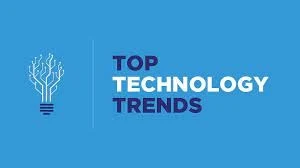

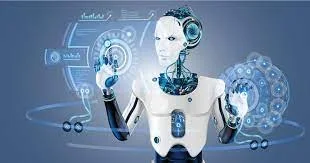
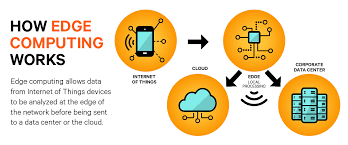

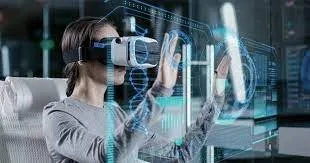
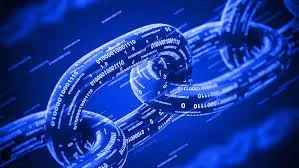

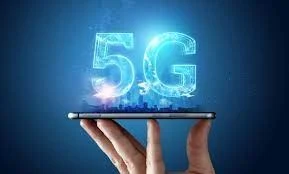

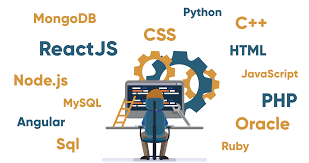
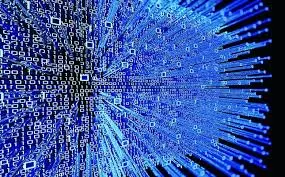
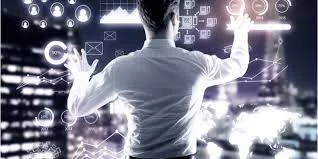


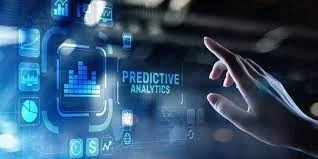

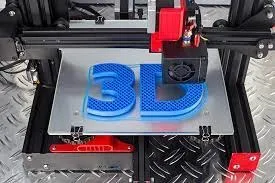


![How to Add a Back to Top Button in Blogger [Special]](https://blogger.googleusercontent.com/img/b/R29vZ2xl/AVvXsEj0WQs0ZGgIjAoNLYkxZn2jJWPmd3ypPmf5oIXi1TXgw9_7fEh-Ocv0oGRkBgxXTBFbFCWW1LwXOuejU8dhDZ0NR0rZT4X0Fks4Tv-pdf8WPoUKAn6hv_e7tkP9bb2XYvSjVt73bGHnPb-ynhO5vMKfhLZKaKMm9wVUUOdrd7jr89UZzrPx2rC2ObxhdA/w72-h72-p-k-no-nu/Untitled.png)


0 Comments